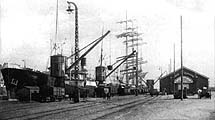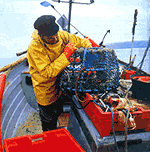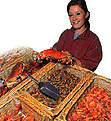Fishing

|
|
The Past This started a yearly tradition in which thousands of fishermen from the ports of northern France would set sail in March for the dangerous herring fishing grounds off Iceland. Their departure was marked by riotous festivals - which are still commemorated in the port towns today, notably Dunkerque. The lucky ones would return in August and September. The ports of this coastline have access to the North Sea, the Channel, and the Atlantic - so fishing has been an important part of the region's livelihood for centuries. |
 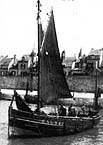 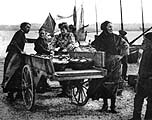 1. Gravelines - the hulls of larger ships are cleaned in winter. 2. Calais - fishing around the port. 3. Etaples - the men are away for Christmas, following the herring shoals further down Channel; but smaller boats still catch some small fish to be sold by the women on the quayside |
|
|
Today's Fishing industry |
|
|
There are far fewer fishermen, because catches have dwindled thanks to over-fishing and competition from giant "factory ships" and their ocean-going trawlers. European attempts to conserve fish stocks have led to restrictions on each country's total catch, and the number of fishing boats that are permitted. |
|
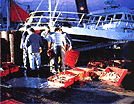 Landing the catch at Boulogne  Coastal fishing at Wissant |
Boulogne - No.1 fishing port Other fishing ports |
|
Places
to visit: |
|
Related background
information |
|
|
|
|

